Biography
Van de Puttelaar was born in Zaandam, The Netherlands. She attended the Rietveld Academie in Amsterdam from 1991 to 1996. She specializes in portrait photography, also portraying nudes. In 2017 she gained her PhD in art history from Utrecht University. She specializes in Dutch and Scottish seventeenth and early eighteenth century portraiture and her seminal book, Scottish Portraiture 1644-1714, was published with Brepols in December 2021. From 2011 to 2014 she taught at the Royal Academy of Art, The Hague.
In 2017, van de Puttelaar started the portrait project Artfully Dressed: Women in the Art World, that consists of over 550 portraits of women in art worldwide, working in different areas of art, representing various ages and cultural backgrounds.
Van de Puttelaar's work has been shown in museums and other venues around the world, and in 2020 she had a retrospective show entitled: Brushed by Light at the National Museum of History and Art in Luxembourg, consisting of 78 works and spanning 22 years. The exhibition was accompanied by a catalog with an introduction by the eminent art historian Rudi Ekkart. In 2021 she collaborated with Iris van Herpen which resulted in the project and exhibition entitled: Synergia.
Van de Puttelaar currently lives and works in Amsterdam, the Netherlands.

Frans Hals the Elder was a Dutch Golden Age painter, chiefly of individual and group portraits and of genre works, who lived and worked in Haarlem.

Jan van Eyck was a painter active in Bruges who was one of the early innovators of what became known as Early Netherlandish painting, and one of the most significant representatives of Early Northern Renaissance art. According to Vasari and other art historians including Ernst Gombrich, he invented oil painting, though most now regard that claim as an oversimplification.

Gerard van Honthorst was a Dutch Golden Age painter who became known for his depiction of artificially lit scenes, eventually receiving the nickname Gherardo delle Notti. Early in his career he visited Rome, where he had great success painting in a style influenced by Caravaggio. Following his return to the Netherlands he became a leading portrait painter. Van Honthorst's contemporaries included Utrecht painters Hendrick Ter Brugghen and Dirck van Baburen.

Isabelle de Charrière, known as Belle van Zuylen in the Netherlands, née Isabella Agneta Elisabeth van Tuyll van Serooskerken, and [Madame] Isabelle de Charrière elsewhere, was a Dutch and Swiss writer of the Enlightenment who lived the latter half of her life in Colombier, Neuchâtel. She is now best known for her letters and novels, although she also wrote pamphlets, music and plays. She took a keen interest in the society and politics of her age, and her work around the time of the French Revolution is regarded as being of particular interest.
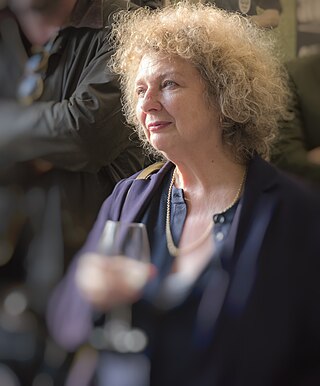
Marlene Dumas is a South African artist and painter currently based in the Netherlands.
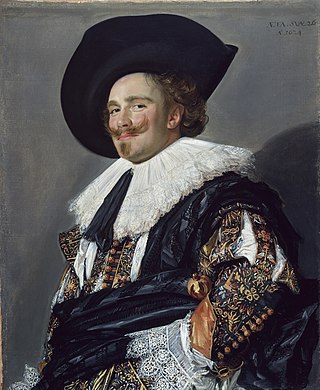
The Laughing Cavalier (1624) is a portrait by the Dutch Golden Age painter Frans Hals in the Wallace Collection in London, which has been described as "one of the most brilliant of all Baroque portraits". The title is an invention of the Victorian public and press, dating from its exhibition in the opening display at the Bethnal Green Museum in 1872–1875, just after its arrival in England, after which it was regularly reproduced as a print, and became one of the best known old master paintings in Britain. The unknown subject is in fact not laughing, but can be said to have an enigmatic smile, much amplified by his upturned moustache.

Judith Jans Leyster was a Dutch Golden Age painter of genre works, portraits, and still lifes. Her work was highly regarded by her contemporaries, but largely forgotten after her death. Her entire oeuvre came to be attributed to Frans Hals or to her husband, Jan Miense Molenaer. In 1893, she was rediscovered and scholars began to attribute her works properly.

Anna Maria van Schurman was a Dutch painter, engraver, poet, classical scholar, philosopher, and feminist writer who is best known for her exceptional learning and her defence of female education. She was a highly educated woman, who excelled in art, music, and literature, and became a polyglot proficient in fourteen languages, including Latin, Ancient Greek, Biblical Hebrew, Arabic, Syriac, Aramaic, and Ethiopic, as well as various contemporary European languages. She was the first woman to unofficially study at a Dutch university.

Fashion in the period 1600–1650 in Western clothing is characterized by the disappearance of the ruff in favour of broad lace or linen collars. Waistlines rose through the period for both men and women. Other notable fashions included full, slashed sleeves and tall or broad hats with brims. For men, hose disappeared in favour of breeches.

Dutch Golden Age painting is the painting of the Dutch Golden Age, a period in Dutch history roughly spanning the 17th century, during and after the later part of the Eighty Years' War (1568–1648) for Dutch independence.
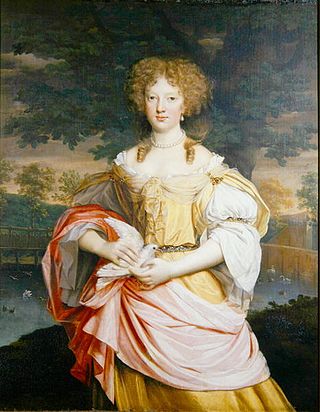
John Michael Wright was an English or Scottish portrait painter in the Baroque style. Wright trained in Edinburgh under the Scots painter George Jamesone, and acquired a considerable reputation as an artist and scholar during a long sojourn in Rome. There he was admitted to the Accademia di San Luca and was associated with some of the leading artists of his generation. He was engaged by Archduke Leopold Wilhelm of Austria, the governor of the Spanish Netherlands, to acquire artworks in Oliver Cromwell's England in 1655. He took up permanent residence in England from 1656 and served as court painter before and after the English Restoration. A convert to Roman Catholicism, he was a favourite of the restored Stuart court, a client of both Charles II and James II, and was a witness to many of the political manoeuvrings of the era. In the final years of the Stuart monarchy he returned to Rome as part of an embassy to Pope Innocent XI.
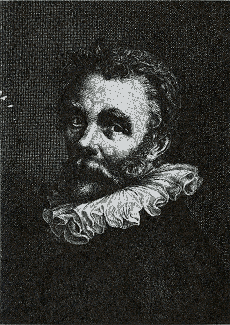
Cornelis or Cornelius Ketel was a Dutch Mannerist painter, active in Elizabethan London from 1573 to 1581, and in Amsterdam till his death. Ketel, known essentially as a portrait-painter, was also a poet and orator, and from 1595 a sculptor as well.
Albert Eckhout (c.1610–1665) was a Dutch portrait and still life painter. Eckhout, the son of Albert Eckhourt and Marryen Roeleffs, was born in Groningen, but his training as an artist and early career are unknown. A majority of the works attributed to him are unsigned. He was among the first European artists to paint scenes from the New World. He was in the entourage of the Dutch governor-general of Brazil, Johan Maurits, Prince of Nassau-Siegen, who took him and fellow painter Frans Post to Dutch Brazil to have them record the country's landscape, inhabitants, flora and fauna. Eckhout is also famous for his still-life paintings of Brazilian fruits and vegetables. His paintings were intended for decoration in a domestic context.

The Allegory of Faith, also known as Allegory of the Catholic Faith, is a Dutch Golden Age painting by Johannes Vermeer from about 1670–1672. It has been in the Metropolitan Museum of Art in New York since 1931.

Portrait of a Lady is a small oil-on-oak panel painting executed around 1460 by the Netherlandish painter Rogier van der Weyden. The composition is built from the geometric shapes that form the lines of the woman's veil, neckline, face, and arms, and by the fall of the light that illuminates her face and headdress. The vivid contrasts of darkness and light enhance the almost unnatural beauty and Gothic elegance of the model.

Lancelot Volders also erroneously known as Louis Volders, Lois Volders and Jan Volders was a Flemish painter who specialised mainly in individual and group portraits but also produced a few history paintings and genre scenes. After training and working in Brussels, he may have worked after about 1700 from time to time at the Stadhouderlijk Hof in Leeuwarden.
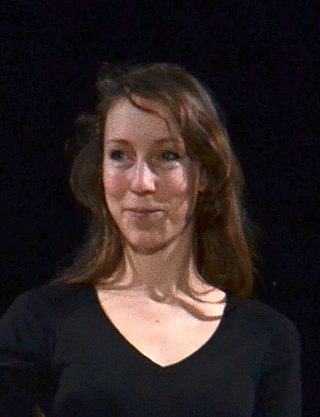
Iris van Herpen is a Dutch fashion designer known for fusing technology with traditional haute couture craftsmanship. Van Herpen opened her own label Iris van Herpen in 2007. In 2011, the Dutch designer became a guest-member of the Parisian Chambre Syndicale de la Haute Couture, part of the Fédération française de la couture. Since then, Van Herpen has continuously exhibited her new collections at Paris Fashion Week. Van Herpen's work has been included in the Metropolitan Museum of Art, the Victoria & Albert Museum, the Cooper-Hewitt Museum in New York and the Palais de Tokyo in Paris.
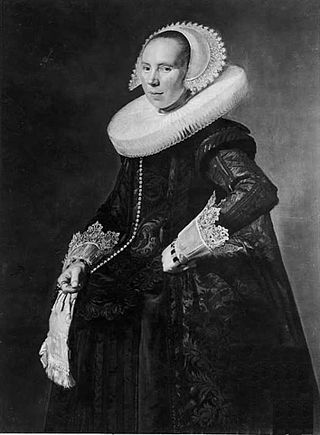
Portrait of Cunera van Baersdorp is an oil-on-panel painting by the Dutch Golden Age painter Frans Hals, painted in 1625 and now in a private collection. It is considered a pendant portrait to the Portrait of a Man Standing, now identified as Cunera's husband Michiel de Wael.

Smiling Girl, a Courtesan, Holding an Obscene Image, also known in Dutch as Een Laggende Vrouw met een naakte Pourtraitje in de Hand, waar onder divisje staat or Jonge vrouw met een medaillon, is an oil painting on canvas by Gerard van Honthorst, created in 1625. It is held in the Saint Louis Art Museum where it is on view in Gallery 236.

Johanna Henriette Derkinderen-Besier was a Dutch needle artist, fashion historian and publicist who was known professionally under the name J. H. Derkinderen-Besier.

















